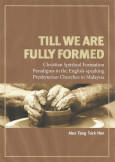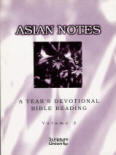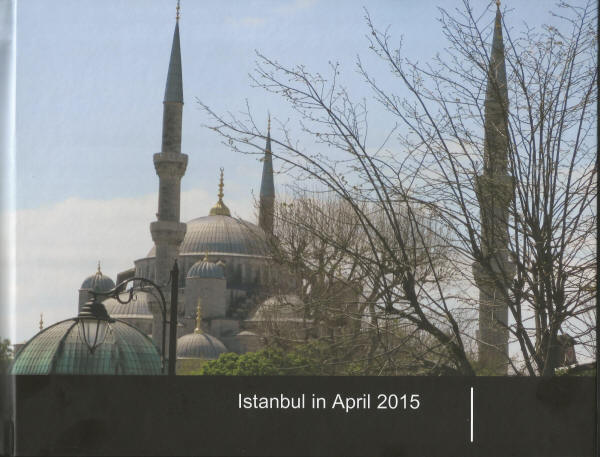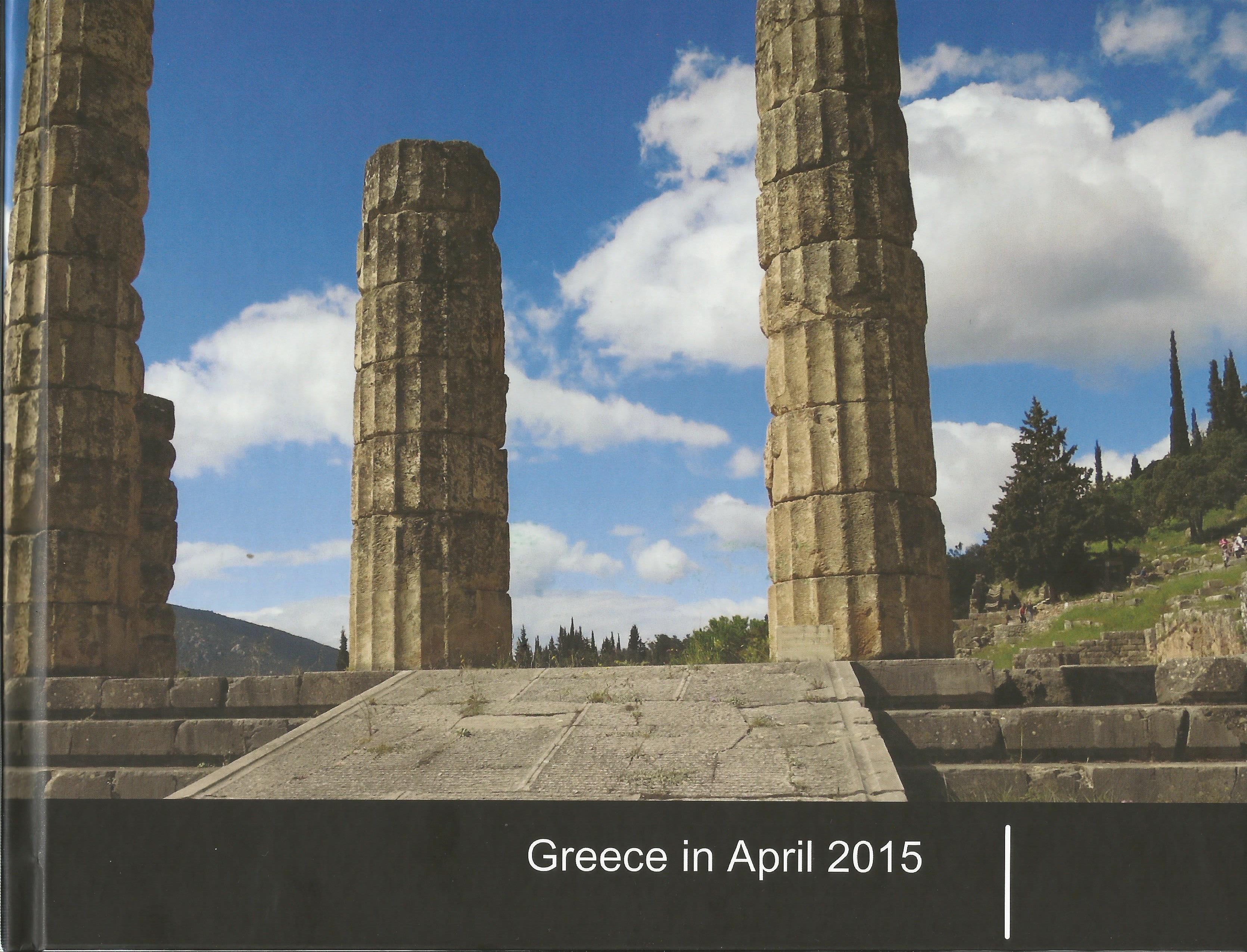Restoring the Image of the Trinity
 Spiritual Formation as Restoring the Image of the Trinity (imatatio Trinitatis)
Spiritual Formation as Restoring the Image of the Trinity (imatatio Trinitatis)The doctrine of the Trinity is that God reveals himself in the Scripture as God the Father, Jesus the Son, and the Holy Spirit. There is only one God and in the essence of this one Godhead, there are three persons: the Father, the Son and the Holy Spirit. These three persons are neither parts of one another, facets, or modes of existence but are co-equal and co-eternal.[1] According to theologian Stanley Grenz contemporary understanding of the doctrine of the Trinity stems from a consensus among theologians that view “theological language as metaphorical” (2001,7-8). Thus it allows theologians from different traditions to interact on this doctrine since a revival of interest stimulated by Karl Barth in the last century (Olson and Hall 2002, 95).
Malaysian theologian Albert Sundaraj Walters suggests a contextualized model of the Trinity which he named “Trinity from Below.” He constructs this model from interviews with Malaysian Christians and Muslims and then reflected on his findings theologically. Using the banana tree as a symbol of “fullness of life,” he writes, “Thus, this image of the banana tree is closely linked to the Trinity which portrays the essence of Being as a coming-from and a going-to, a giving and receiving” (2002, 276). A Korean theologian in the United States, Jung Young Lee uses the Chinese symbol of Yin-Yang to express his understanding of the Trinity. He starts with Jesus whose dual nature as man and God is reflected in the two portions of the Yin-Yang symbol. The feminine Yin represents the Holy Spirit which is female and Mother. The Yang represent the masculine and hence God the Father. (Lee 1996). These are just two examples of how Asian theologians are engaged in understanding the Trinity.
Catholic theologian Karl Rahner’s describes the Trinity in a short sentence, “The ‘economic’ Trinity is the ‘immanent’ Trinity and the ‘immanent’ Trinity is the ‘economic’ Trinity” (1967, 22). Olson and Hall broke that rather cryptic statement into “immanent Trinity”(beyond the world) and “economic Trinity”(within history). What Rahner is saying is that God created the world and relates to the world, but the world is not part of God. Otherwise, saving the world “becomes God’s self-salvation as well.” (Olson and Hall 2002, 3). Thus God is uniquely one: “The Lord, our God is one Lord” (Deu.6:4) who is the creator that stands outside of his creation.
The three persons of the Trinity relates to one another. The Father sends the Son and yet remains with him (Jn 8:29). The Son represents the Father and obey him willingly (Jn 8:28). Jesus proclaims that he is God (Jn 8:58) and accept faith and worship from his disciples (Matt.16:16, Jn 20:28). The Holy Spirit is part of this relationship (Jn 14-16). The close and intimate relationship and interaction within the Trinity is often referred to as perichoresis, the Greek word for a dance. As in a dance, there is a dynamic energy as each dancer moves in perfect partnership and equality with each other.[2]
Volf in arguing for an anthropological model of “social trinitarianism” emphases that the Trinity is not just understood by God’s self-revelation but also by what was done in salvation history (2006, 5-7). He then elaborates that there is a role for a person with the image of God or of the Trinity (imatatio Trinitatis). According to him,
Because God has made us to reflect God’s own triune being, our human tasks are not first of all to do as God does – and certainly not to make ourselves
as God is – but to let ourselves be indwelled by God and to celebrate and
proclaim what God has done, is doing, and will do (2006, 6-7).
This role of human, created in God’s image and fulfilling the potential of that image by the indwelling of the Holy Spirit is similar to our definition of Christian spiritual formation. I will argue that this aspect of the Trinity is the basis for Christian spiritual formation. I will use an anthropological approach which is consistent with my approach in the earlier parts of this section concerning shalom and the image of God.
First, Christian spiritual formation is a process of being in communion with the Trinitarian God. Grenz describes the influence of social personalism[3] as the realisation the self who is not a “what” but a “who.” This “who” emerges out of conversations with other “whos” to become persons-in-communion. However it is when persons-in-communion become part of a conversation with God that the “who” discover discovers its identity as a person-in-relationship (2001, 12-14). It is in community with a Christian faith community that we discover who we are. This is only possible in relationships with others in the community and with God. When God created us, it is to enjoy a relationship with him (Gen.3:8, 9). Our spiritual growth is a process of self discovery in relationship with God and with others. Puritan theologian John Owen in his 1657 book, Communion with the Triune God described in detail the communion possible with the Triune God, and individually with God the Father, Jesus the Son, and the Holy Spirit (Owen 2007). He noted,
Our communion, then with God consists in his communication of himself unto us, with our return unto him of that which he requires and accepts, flowing from
that union which in Jesus Christ we have with him (Owen 2007, 94 edited by Kelly
M.Kapic and Justin Taylor)
The Trinitarian God engages individuals in Christian faith communities in communion. Communion helps us to know God by moving from a cognitive state to an experiential state. This is sometimes called faith[4]. We learn about love too. In order to save us and to reveal himself to us, God became incarnate. Jesus Christ is God incarnate; fully human and fully God (1 Jn. 1:1-3). God the Father shows us love in action as Jesus the Son suffers and dies on the cross. The persons of the Trinity are so close that when Jesus suffers, the Father and the Holy Spirit also experience suffering. Erickson comments, “This says that God is not merely aloft and indifferent to suffering in the world. The second person of the trinity has acted to take some of that evil’s effects on himself ” (2000, 74).
Second, Christian spiritual formation is about a process of building relationships. Theologian Jürgen Moltmann suggests that it is the interpersonal relationship within the Godhead that gives us the model to love our neighbours (1981, 199). Within the Godhead, there is mutual respect, submission, harmony and equality. This should then be the model for us to respect, submit and live with one another in harmony and equality (Erickson 2000, 84-98). Walters suggests that hospitality and friendship are important elements in learning from the interpersonal relationship within the Trinity (2002, 265- 278).
Third, Christian spiritual formation is a process of forming a people for the Trinitarian God (Rom.8:29, 30: 1 Peter 2:9-10). The Biblical record is a meta-narrative of how God is calling a people to himself, those whom he has prepared before creation began. Gabriel Franke illustrates, “In the most elementary of terms, these refrains are the chapter heading of The Christian Story: Creation, Fall, Covenant, Jesus Christ, Church, Salvation, Consummation, with their Prologue and Epilogue, God.” (1996, 5). God, the Father intervenes in history to create this group of people. To prove his commitment, God has sealed this group of people with the Holy Spirit. This special group of people is the ecclesia (the called out ones) or the Church who will praise and worship him for all eternity. In a series of lectures on The Promises & Problems of Evangelical Spirituality given in Regent College, Vancouver, Simon Chan said that the “church is pre-existing. God uses creation as a means to bring the church into existence for communion with him.”[5] Grenz in his examination of the postmodern self, identifies the “ecclesial” self that is formed in the Church in communion and as an image of the relational Trinitarian God (2001, 331-336). Theologian Miroslaf Volf, writing from the perspective of Roman Catholic and Orthodox theologies concludes also that the Church is the image of the Trinity (Volf 1998).
Finally, Christian spiritual formation is a process of being the body of Christ on earth after Jesus has ascended to heaven. This body of Christ or the Church will carry on Jesus’ mission here on earth. To enable them to complete this mammoth task, God the Father sent the Holy Spirit to indwell them and empower and guide them with spiritual gifts and other divine powers. Jesus’ mission is to carry out to completion the Father’s plan of redemption for all fallen men and women, and the fallen creation itself. The idea of mission dei (mission of God) was first mooted following the lead of Karl Barth at the International Missionary Council held in Willingen, Germany (Seamands 2005,160). The one-in-three or plurality of the Trinity also helps to explain the relationship of the Trinity to creation or the natural world. Theologian Colin Gunton, using T.F. Torrance “parallel rationalities” argues that
the plurality in unity of the triune revelation enables us to do justice to the diversity, richness, and openness of the world without denying its unity in
relativistic versions of pluralism. It is that vision that trinitarian theology
has to offer the fragmented modern world (Gunton 1997,103.
Missio dei is the restoration of human beings and nature, through the empowering of the people of God by the Holy Spirit. Canadian theologian Paul Stevens explains, “Mission is God’s own going forth – truly an ekstasis of God. He is Sender, Sent and Sending,” (Stevens 1999, 194).
The challenge is to explain the Trinity to a multicultural pluralistic society like Malaysia. Simon Chan posed some interesting questions
How do we teach the Trinity vis-avis the world religions such as Hinduism,
Buddhism and Islam?…How does the Christian doctrine of the Spirit relate to the
traditional Asian animistic instinct?... What do we make of the hierarchical
structure of the Asian family?...How does Christian prayer differ from the idea
prevailing in popular religions that it is an “exchange” between a person and
the deity? (2006,116-117)
In examining the Trinitarian influence on ministry, theologian Stephen Seamands discovers seven characteristics: (1) relational personhood, (2) joyful intimacy, (3) glad surrender, (4) complex simplicity, (5) gracious self-acceptance, (6) mutual indwelling, and (7) passionate mission (Seamands 2005). These seven characteristics should not only influence ministry but also describe Christian spiritual formation. At least it may offer a common ground to dialogue with other religions and Asian cultures.
Bibliography
Chan, S. (2006). Liturgical Theology: The Church as Worshiping Community. Downers Grove, Illinois, InterVarsity Press.
Dykstra, C. (2005). Growing in the Life of Faith: Education and Christian Practices. Louisville, KN, Westminster John Knox Press.
Erickson, M. J. (2000). Making Sense of the Trinity. Grand Rapids, MI, Baker Books.
Fackre, G. (1996). The Christian Story: A Narrative Interpretation of Basic Christian Doctrine. Grand Rapids. MI, William B. Eerdmans Publishing Company.
Grenz, S. J. (2001). The Social God and the Relational Self: A Trinitarian Theology of the Imago Dei. Louisville, KY, Westminster John Knox Press.
Grenz, S. J. (2004). Rediscovering the Triune God: The Trinity in Contemporary Theology. Minneapolis, MN, Fortress Press.
Gunton, C. (1997). The Trinity, Natural Theology, and a Theology of Nature. The Trinity in a Pluralistic Age: Theological Essays on Culture and Religion. K. J. Vanhoozer. Grand Rapids, MI, William B. Eerdmans Publishing Company: 88-103.
Lee, J. Y. (1996). The Trinity in Asian Perspective. Nashville, Abingdon Press.
Moltmann, J. (1981). The Trinity and the Kingdom of God. London, SCM Press.
Olson, R. and C. Hall (2002). The Trinity. Grand Rapids, MI, William B. Eerdmans Publishing Company.
Owen, J. (2007). Communion with God. Wheaton, IL, Crossway Books.
Peterson, E. H. (2005). Christ Plays in Ten Thousand Places: A Conversation in Spiritual Theology. Grand Rapids, MI., William B. Eerdmans Publishing Company.
Rahner, K. (1967). The Trinity. New York, Crossroad Publishing Company.
Seamands, S. (2005). Ministry in the Image of God: The Trinitarian Shape of Christian Service. Downers Groove, IL, InterVarsity Press.
Stevens, R. P. (1999). The Other Six Days: Vocation, Work and Ministry in Biblical Perspective. Grand Rapids, MI., William B. Eerdmans Publishing Company.
Volf, M. (1998). After Our Likeness: The Church as the Image of the Trinity. Grand Rapids, MI, William B. Eerdmans Publishing Company.
Volf, M. (2006). Being as God Is. God's Life in Trinity. M. Volf and M. Welker. Minneapolis, MN, Fortress Press: 3-12.
Walters, A. S. (2002). We Believe in One God? Reflections on the Trinity in the Malaysian Context. New Delhi, ISPCK.
Endnotes
[1] Following Karl Barth, some of the Protestant theologians like Jürgen Moltman, Wolfhart Pannenberg and Eberhard Jüngel in Germany; T.F. Torrance and Colin Gunton in the United Kingdom; Ted Peters, Miroslav Volf, Elizabeth Johnson, Emil Brunner, Paul Tillich, Robert Jensen and Millard Erickson in the North America; Leonardo Boff, Okechukwu Ogbonnaya and Jung Young Lee in Latin America, Africa and Asia; Roman Catholics theologians like Karl Rahner,and Catherine Mowry LaCunga; Orthodox theologians like Vladimir Lossky and John Zizioulas, have been influential in developing our theological understanding of the Trinity. Olson and Hall have written a comprehensive historical and theological survey of the doctrine of the Trinity with a very useful bibliography on books published in English on the Trinity . see Olson, R. and C. Hall (2002). The Trinity. Grand Rapids, MI, William B. Eerdmans Publishing Company. See also Rahner, K. (1967). The Trinity. New York, Crossroad Publishing Company.; Grenz, S. J. (2004). Rediscovering the Triune God: The Trinity in Contemporary Theology. Minneapolis, MN, Fortress Press.
[2] The Greek word perichoresis is not in the Bible. It is a word from classical Greek and was introduced by Greek theologian John Damascene in the eight century. Damascene used it “to highlight the dynamic interpersonal character of the Trinity in contrast to impersonal images and abstraction.” See Peterson, E. H. (2005). Christ Plays in Ten Thousand Places: A Conversation in Spiritual Theology. Grand Rapids, MI., William B. Eerdmans Publishing Company. p.344.
[3] Grenz attributes much of the thinking behind “social personalism” as based on the works of Martin Buber, Michael Polanyi, and John Macmurray. Grenz, S. J. (2001). The Social God and the Relational Self: A Trinitarian Theology of the Imago Dei. Louisville, KY, Westminster John Knox Press. p.10-14.
[4] Dykstra makes this point, “…that faith is still primarily a matter of knowing some thing, however, we have missed what is fundamental about it. For faith is not only knowing the message, it is knowing the Messenger. (italics author’s) Dykstra, C. (2005). Growing in the Life of Faith: Education and Christian Practices. Louisville, KN, Westminster John Knox Press. p.21. Hence faith is not blind.
[5] Notes transcribed while listening to lectures. Spring School, Regent College, Vancouver. 29 May-9 June, 2006
picture credit
Labels: Asian Theology, Descriptors Spiritual Formation, Spiritual Formation, Theology















4 Comments:
Human Personhood only makes sense within the interaction of the 3 persons of the Trinity.
One interesting application is in the area of ethnicity. Father, Son and Holy Spirit are not ethnic beings but beings in communion.
hi Raphael,
Thank you for highlighting this important point. In the perichoresis of the Trinity, there is no ethnicity. That is why the Trinity is relevant to a multiethic pluralist post modern world.
good point!
One of the challenges in missions is to communicate the the divine gifting of ethnicity within the context of harmonious and complementary relationships.
Pentecost affirms ethnicity and Revelations 7 gives us a window into Christ centred enthnic relationships within the context of worship.
The gift however becomes a curse when ethnicity turns into itself and sees other races as a threat.
Raphael,
I cannot agree with you more. And I have the utmost respect for you guys who cross oceans into new cultures, ethnic groups, and languages to spread the gospel.
Post a Comment
<< Home